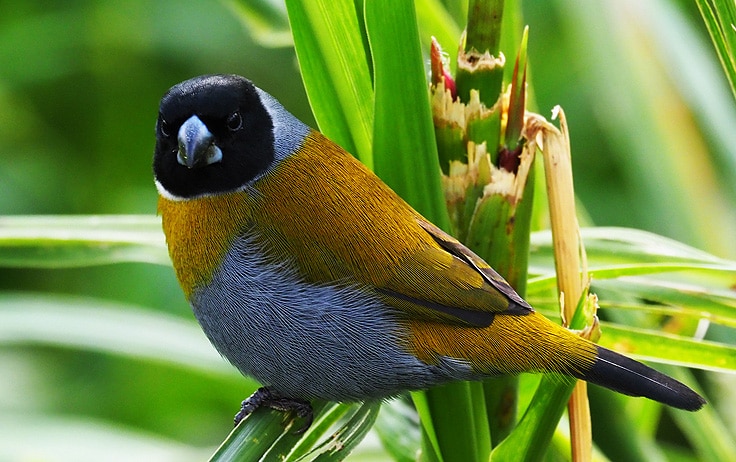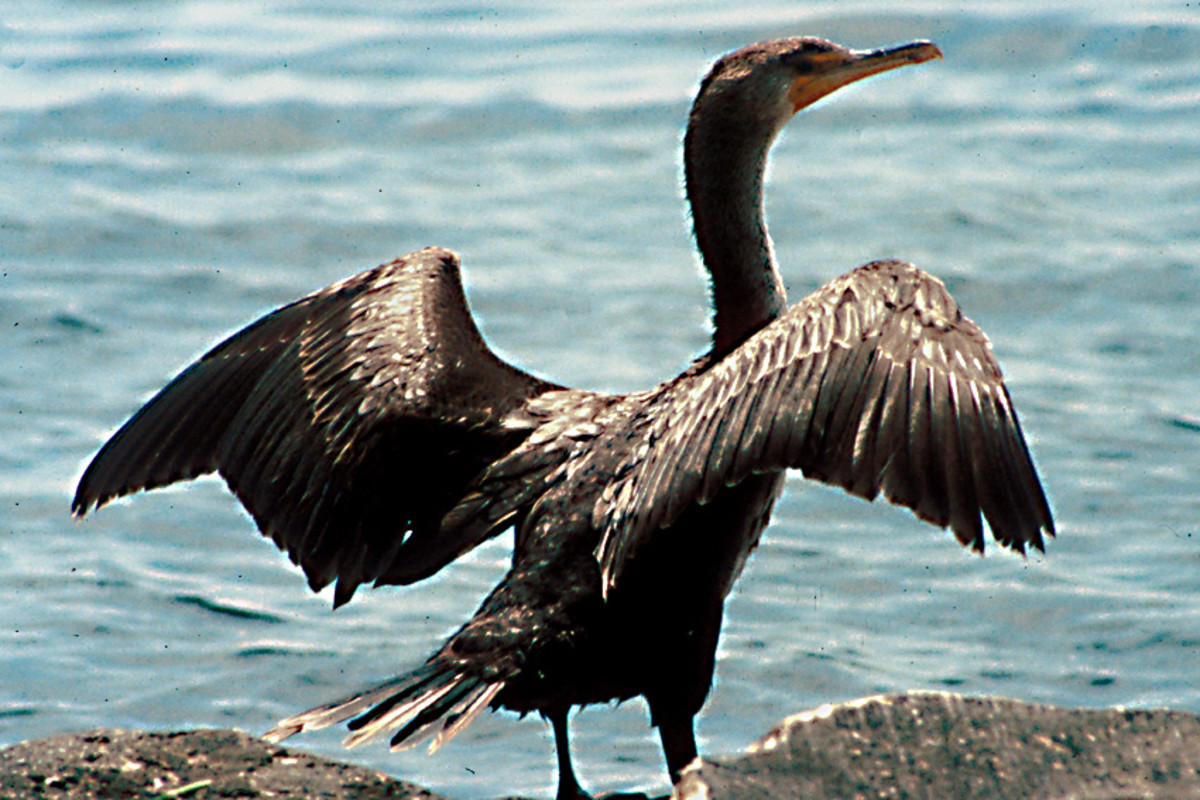Birding to Mabamba Swamp
We start early and drive to Mabamba Swamp, 50km west of Kampala. Stop en route at Mpigi Swamp for papyrus rarities. Open your eyes for a White-winged Warbler, Papyrus Gonolek, Yellow-backed Weaver, Northern Brown-throated Weaver, Blue-headed Coucal, and other swamp specialities. At the swamp, most of the birding is on a canoe, paddled by our local site guides. Look for the Shoebill both in the sky and down on the marsh. Like nothing else on earth, this most famous and bizarre avian wonder is the only representative in its family. It is truly a life-changing moment looking at this bizarre bird as it preens, showing off its huge grinning, and wooden-looking, clog-like bill. You may also have marvelous views of it as it soars on broad wings.
Also watch for the Swamp Flycatcher, African Purple Swamp-hen, African Water Rail, Common Moorhen, Lesser Jacana, African Jacana, African Pygmy Goose, White-faced Whistling-duck, Squacco, Rufous-bellied and Purple Heron, Blue-breasted Bee-eater, Winding Cisticola, Goliath Heron, Black Crake, African Marsh Harrier, Hamerkop, Malachite and Pied Kingfishers, Common Waxbill, Yellow-billed Duck, Blue-headed Cuckoo, Fan-tailed Widowbird, Intermediate Egret, Osprey, Long-toed Lapwing, African Pied Wagtail, and Red-billed Fire-finch.
Mabira Birding Trip
After an early breakfast we’ll transfer to Mabira Forest. Although isolated by the surrounding banana and sugar plantations, this remarkably productive forest is possibly the richest in the country, and well-maintained trails make birding easy. Mixed flocks are often found along the broad tracks, and noisy groups of the near-endemic Weyn’s Weaver, arguably the most attractive of the group, busy themselves in the canopy. We can also hope to see African Pied Hornbill and Forest Wood-Hoopoe, while the seasonal pools can attract Blue-breasted, White-bellied, Dwarf and Shining-blue Kingfishers. Yellow-throated and Speckled Tinkerbirds live in the canopy and Toro Olive Greenbul and Green-tailed Bristle bill are secretive interior inhabitants. If there are safari ants on the march, Fire-crested Alethe, Forest Robin and Blue-shouldered Robin-Chat may be in attendance, the rare Tit Hylia is many a time viewed, Yellow Billed, Yellow Spotted and Hairy Breasted Barbets are seen among others. The elusive Purple Throated, Olive Green, Jameson’s Wattle-eye, Grey and Yellow Longbill will be among our target while birding here, Soty, African Paradise and red Bellied paradise flycatchers, Tambourine Dove, White Breasted and Grey-Headed Negrofinch, and many more.
Birding Trip to Entebbe Botanical Gardens
This is and ancient garden lying on the showers of Lake Victoria and the outskirts of Entebbe. It being a garden near a lake, the location makes it the number one spot for birding around Kampala and Probably Entebbe as it has a mixture of Forest, Water and Urban dweller species of birds. While here we look out for the Great Blue and Ross’s Turacos, Ashy Flycatcher, Black Cuckooshrike, Red Chested, Klaas’s and Diederik Cuckoo, Winding and Red Faced Cisticola, Sedge, Eurasian and Great Reed Warbler, Fain Tailed Widow bird, Striped, Malachite, Giant, Woodland and Pygmy Kingfishers, Black Bishop, Grey Woodpecker, Olive, Olive bellied, Red chested, Superb, Copper and Collard sunbird, Orange, Golden Backed, Yellow Backed, Slender Billed, Black Necked, Viellot’s Black Weaver, African Thrush, Hauglin’s Robin-chat, on a lucky day the Bat Hawk might be seen during the day.
Birding to the Lutembe Bay
Lutembe, which is located about 2 kilometers off Kampala-Entebbe road in the district of Wakiso. Lutembe area is among the wetlands, which have been gazetted by the National Environment Management Authority and is a well-known bird sanctuary/Ramser Site and IBA. Lutembe is blessed with both water and savannah birds, the area is ideal for bird watching is the Lutembe bay and the area around the beach plus a boat ride towards the Rose bird flower gardens which gives us an exposure to the water birds
Some of the common birds sighted include the Hammerkops, Egrets, Storks mostly the open-billed Stork, the Black-winged stilt, the Common Moorhen, Black Crake, Chats, Weavers, Widowbirds, Doves, Gulls look out for the White Browed Scrub Robin, Grassland, Plain Backed and Tree Pipits, Yellow Throated long Claw, Flappet and Rufous Naped Larks, Senegal, African Wattled and spur Winged lapwing, Grey capped, sedge and Reed Wablers, papyrus Gonolek, Blue Headed Coucal and white browed Coucal.
Birding to Buso Forest
This forest is about 5 km off Kampala-Luwero highway about 1:30 minutes drive from Kampala . BUSO forest is a quiet place ideal for picnics, it was started way back in 1995 by the Tropical Environmental Foundation (TEFO) on 30 acres of land with a number of people who had the passion for nature. It should be noted that when an eco tourism analysis potential was carried out in 1999, the forest was home to 127 species of trees, 40 spp of butterflies, 11 species of amphibians and 120 species of birds.
On a day’s visit, one might not miss the Grey Headed Negrofinch, Yellow rumped Tinkerbird, Lizard Buzzard, whistling Cisticola, White chinned prinia, Klaas’s Cuckoo, Tamborine dove, Senegal coucal Marsh Tchagra, Purple Banded Sunbird, Bronze Manikin, Eastern Grey Plantain Eater Gross Beak Weaver, Olive Bellied Sunbird, Little Green Bull, Pygmy Kingfisher, Toro Olive Greenbull, Yellow White Eye, Angolla Swallow, Brown Illadopsis, Green Hylia Splendid Glossy Starling, Great Blue Turacco, Crowned Hornbill, Black and White Casqued Hornbill, Red Bellied Paradise Flycatcher, Cameron Sombre Greenbull, Hadada Ibis, White Spotted Fluftail, Common Bulbull, Red Billed Fire Finch, African Emerald Cuckoo, Honey Guide Greenbull, Olive Sunbird, Green Headed Sunbird, Western Nicator, Yellow Spotted Barbet, White Throated Bee eater, White Throated Greenbull, Yellowbill, Brown Eared Woodpecker, Green Backed Cameroptera, Superb Sunbird, Brown Throated Wattle Eye, Yellow Billed Barbet, Yellow Throated Tinkerbird, Chestnut Wattle eye, Slender Billed Greenbull, Little Olive Sunbird, Violleit’s Black Weaver, Woodland Kingfisher, African Thrus, Black Headed Heron, Pin Tailed Whyadah, Blue Spotted wood dove, Yellow Throated Longclaw, Yellow Mantled Widowbird, Grey Crowned Crane, African Paradise flycatcher, Ross’s Turaco and many more.


